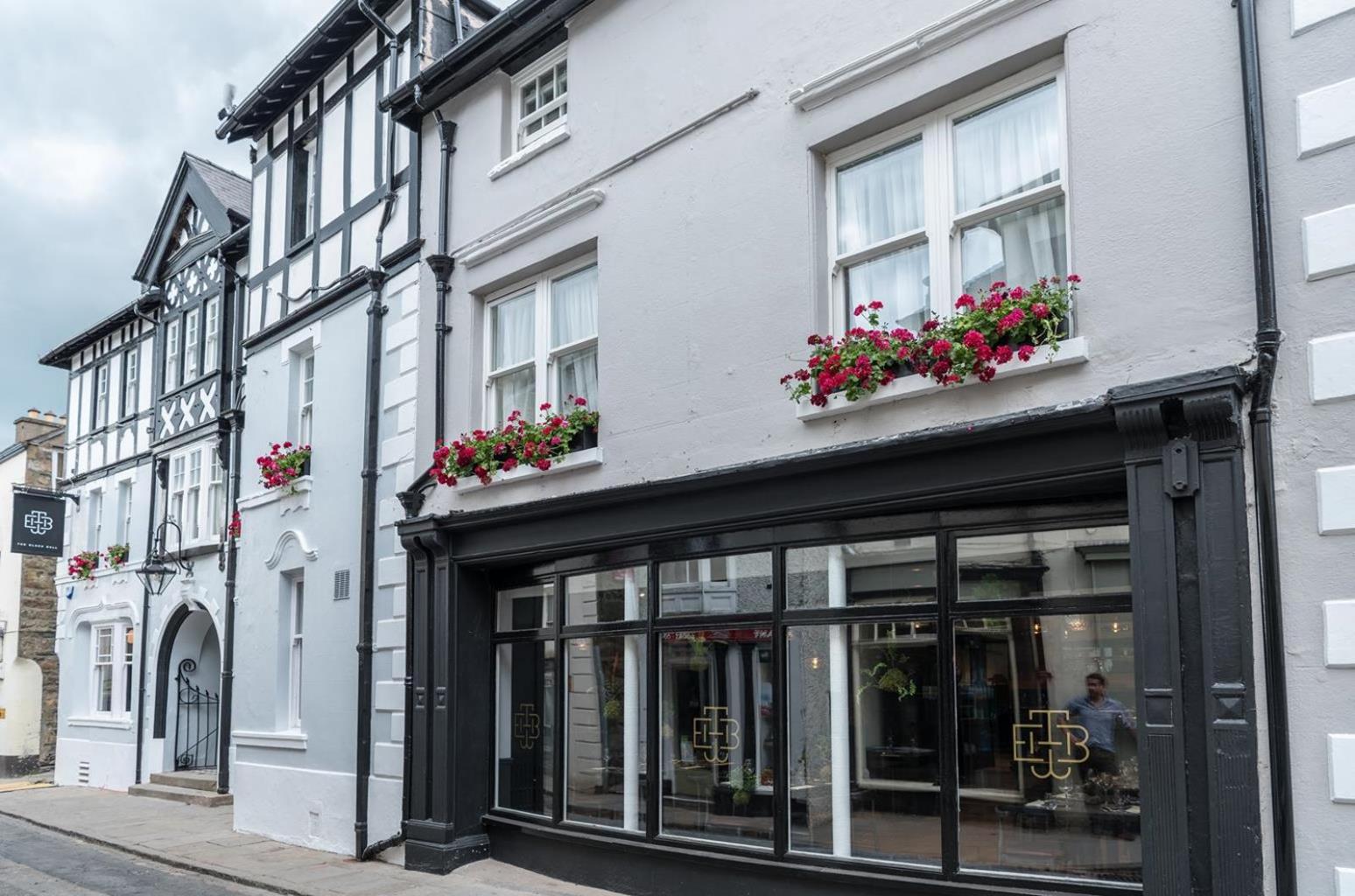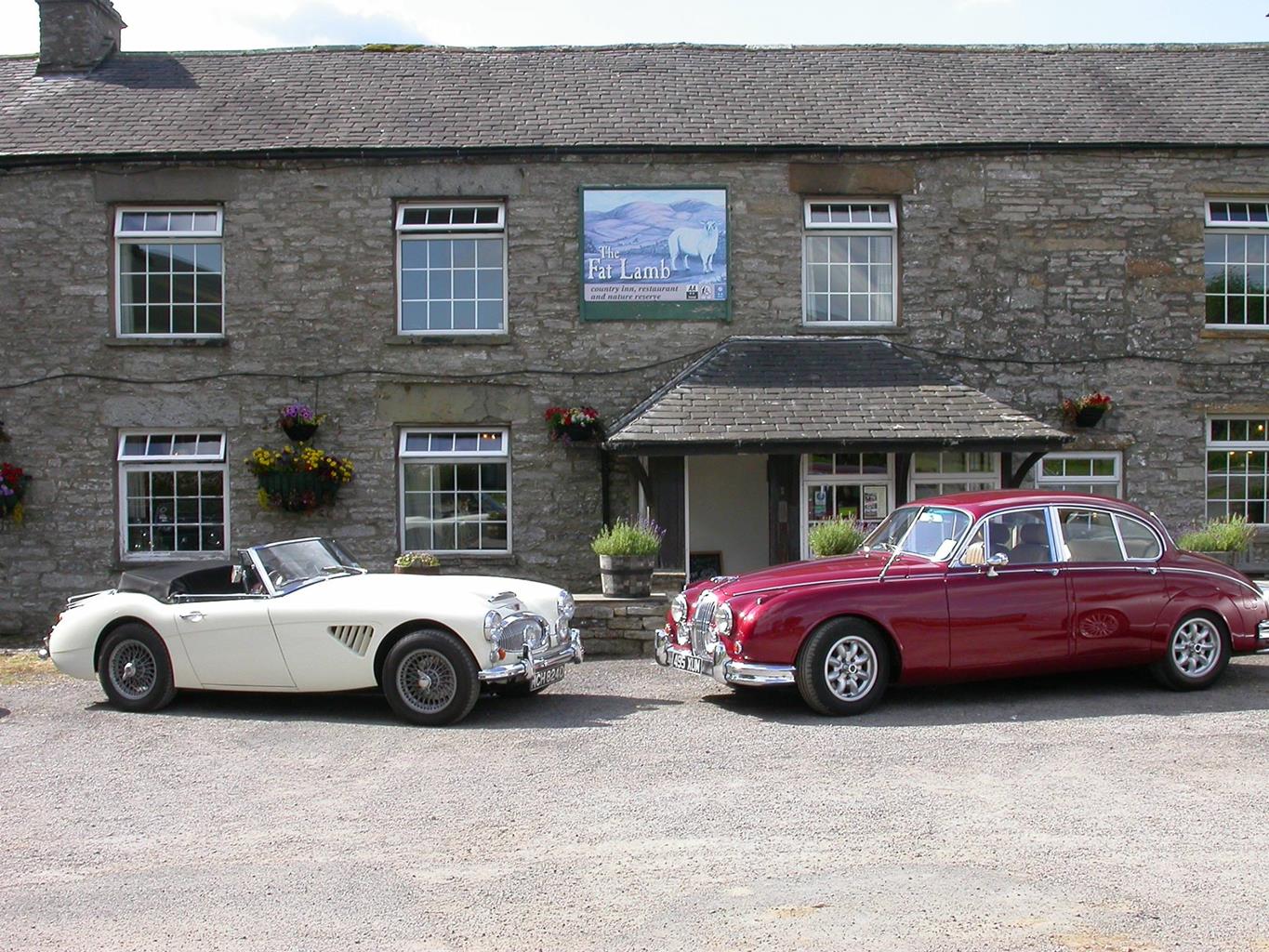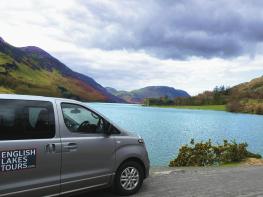The Black Bull, a former 17th century coaching inn, has been lovingly and sympathetically…
Sedbergh and the Quakers

4.5 miles (7.2kms)
About the walk
The solid, stone-built town of Sedbergh, one of the largest settlements in the Yorkshire Dales National Park, was once in the West Riding of Yorkshire, but has been part of Cumbria since 1974. Two things – the Howgill Fells, especially the southernmost peaks of Winder and Crook, and Sedbergh School, which wraps around much of the town’s south side – dominate this friendly town. Among its most notable former students are the geologist Adam Sedgwick and the international rugby players Will Carling and Abbie Ward.
Brilliant Mathematician
John Dawson taught Sedgwick and a group of other gifted scholars at the school in the late 18th century, and is commemorated with a bust by the sculptor Flaxman, high on the south nave wall in Sedbergh parish church. Almost opposite the church is the school's oldest building, built in 1716, now the school library.
The Quaker Link
The Sedbergh area is noted for its Quaker associations. In 1652 the founder of the Society of Friends, George Fox, came to the town and preached from a bench beneath a yew tree in the churchyard to a great crowd of people attending the Hiring Fair. On Firbank Fell, north west of Sedbergh, Fox again preached to a large crowd, this time from a large stone, still known as Fox's Pulpit. This meeting is said to mark the inception of the Society of Friends. Fox wrote: 'This was the place that I had seen a people coming forth in white raiment; and a mighty meeting there was and it is to this day near Sedbergh which I gathered in the name of Jesus.'
Meeting at Brigflatts
The best reminder of the early days of the Quakers in the area is to be found in the tiny hamlet of Brigflatts. Fox stayed here with Richard Robinson in a farmhouse in 1652, and in 1674 the Friends of the district decided to build a Meeting House. It still survives, and is the oldest in the North and the third oldest in England. From the outside, it looks like a typical whitewashed cottage of the period, though, unlike most cottages, it had a stone roof from the start. Each winter the cracks in the slate were stuffed with moss to stop the rain getting in. George Fox was there in 1677, noting 'a great concourse and there were about 500/600 persons present. A very good meeting it was.' Around the beginning of the 18th century a schoolroom was built over the stable and the gallery was put up to accommodate the large gatherings. At the foot of the gallery stairs look out for the dog pen that was provided for the sheepdogs accompanying their masters to the meetings. Just up the lane from the Meeting House is the small and peaceful Burial Ground, first used in 1656.
Walk directions
From the car park, turn right along main street. At the junction with the main road turn left. At the churchyard, turn right, signed 'Cattle Market or Busk Lane'. At the next signpost, go left behind the pavilion, then straight ahead through two kissing gates to a road. Cross and go down a track beside playing fields. Go through a kissing gate near a barn and follow a green path to pass Birks House.
Go through a kissing gate to a lane and turn left. Pass several houses then go right, through a metal kissing gate, and bear half left to a waymarker, roughly following the Brigflatts sign. Follow the wall and then cross a field to a small bridge under the old railway. Drop down and bear slightly left on a path across fields to a gate onto a quiet lane opposite the Quaker Burial Ground.
Turn left to visit the Meeting House, then return to the gate, continuing on up the lane to the main road. Turn left. Just before the bend sign, go through a signed metal kissing gate in the hedge on the left. Follow the narrow path to meet the River Rawthey and walk upstream to a large railway bridge.
Go through the gate and slant up the embankment. Cross and descend back to the river. Continue along the riverside, passing the confluence of the Rawthey and the Dee, and reach a tarmac lane by an old mill.
Follow the lane back into Birks. Go right, though the kissing gate signed 'Rawthey Way' (you went through this the other way earlier in the walk). By the hedge around Birks House, bear right and down towards the river. Walk alongside another playing field to a stile. Climb slightly left to go past a folly. Follow the left side of a wood, then enter at a kissing gate. At a footpath sign, bear right down a sunken path. Leave the wood and follow a clear path across a field to emerge onto a road by a bridge. Turn left. By the 'Sedbergh' sign, go right, though a stile. Cross the field to another stile, then bear left alongside a wall to another kissing gate.
Cross a drive, go downhill and straight on along a lane to the main road. Cross the road then turn left at the 'No Entry' sign, along Sedbergh's main street to the car park.
Additional information
Mostly on field and riverside paths, 7 stiles
Playing fields give way to rich farmland, dominated by fells
Keep dogs on lead when animals in fields
OS Explorer OL19 Howgill Fells & Upper Eden Valley
Pay-and-display car park on Joss Lane, off Sedergh’s Main Street (which is one way from the west)
By car park
WALKING IN SAFETY
Read our tips to look after yourself and the environment when following this walk.
Find out more
Also in the area
About the area
Discover Cumbria
Cumbria's rugged yet beautiful landscape is best known for the Lake District National Park that sits within its boundaries. It’s famous for Lake Windermere, England’s largest lake, and Derwent Water, ‘Queen of the English Lakes'. This beautiful countryside once inspired William Wordsworth and his home, Dove Cottage, in Grasmere is a popular museum. Another place of literary pilgrimage is Hill Top, home of Beatrix Potter, located near Windermere. Tom Kitten, Samuel Whiskers and Jemima Puddleduck were all created here.
Much of Cumbria is often overlooked in favour of the Lake Distirct. In the south, the Lune Valley remains as lovely as it was when Turner painted it. The coast is also a secret gem. With its wide cobbled streets, spacious green and views of the Solway Firth, Silloth is a fine Victorian seaside resort. Other towns along this coastline include Whitehaven, Workington and Maryport. Carlisle is well worth a look – once a Roman camp, its red-brick cathedral dates back to the early 12th century and its 11th-century castle was built by William Rufus.
Nearby stays
Restaurants and Pubs
Nearby experiences
Recommended things to do
Why choose Rated Trips?
Your trusted guide to rated places across the UK
The best coverage
Discover more than 15,000 professionally rated places to stay, eat and visit from across the UK and Ireland.
Quality assured
Choose a place to stay safe in the knowledge that it has been expertly assessed by trained assessors.
Plan your next trip
Search by location or the type of place you're visiting to find your next ideal holiday experience.
Travel inspiration
Read our articles, city guides and recommended things to do for inspiration. We're here to help you explore the UK.













